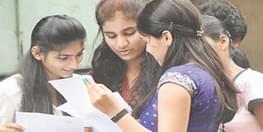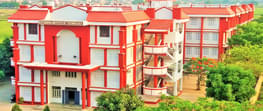Kanhaiya Kumar hails from Nalanda, Bihar, and has made a significant mark in the field of mechanical engineering. With a strong passion for mathematics and thermodynamics, he embarked on his academic journey by completing his 10th and 12th education from the Bihar School Examination Board in 2004 and 2006, respectively. Kanhaiya went on to earn a B.Tech degree from Vinayaka Mission University in 2012 and furthered his expertise with an M.Tech in Thermal Engineering from SRK University, Bhopal, in 2017. His research focus included the development of the innovative "Thetis One Stroke IC Engine." With an impressive career spanning 9 years, Kanhaiya Kumar has emerged as a dedicated lecturer in the field of mechanical engineering, leaving a lasting impact on the academic and engineering community.
Check SIIT

As a professor in a B.Tech college, what are your thoughts on the current state of education in our country?
The current state of education in our country is a mixed bag. While there have been significant advancements in terms of infrastructure and access to resources, there are still challenges in terms of quality, practical application, and industry relevance.
How do you ensure that your teaching methods align with the changing needs of the industry?
I believe in constantly updating my teaching methods and curriculum to align with the changing needs of the industry. This includes incorporating practical exercises, industry collaborations, and staying updated with the latest technological advancements.
What role do you believe technology plays in enhancing the learning experience for B.Tech students?
Technology plays a crucial role in enhancing the learning experience for B.Tech students. It provides access to a vast amount of information, facilitates interactive learning through simulations and virtual labs, and enables collaboration among students and faculty.
What measures do you take to ensure that students develop critical thinking and problem-solving skills?
To foster critical thinking and problem-solving skills, I encourage students to actively participate in discussions, engage in hands-on projects, and provide real-world examples to illustrate theoretical concepts. Additionally, I assign challenging assignments and encourage students to think independently and find innovative solutions.
Check SIIT Gallery
How do you address the individual learning needs of students in a classroom setting?
In a classroom setting, I strive to create an inclusive learning environment where each student's individual learning needs are addressed. This involves using various teaching techniques, providing additional support to struggling students, and encouraging open communication to understand their specific learning requirements.
How do you believe the role of education has evolved over the years, and what impact has it had on students' learning experiences?
Education has transformed significantly over the years, shifting from a traditional lecture-based approach to a more student-centered and interactive model. This evolution has allowed students to actively engage with the material, fostering critical thinking and problem-solving skills. Moreover, advancements in technology have opened up new avenues for learning, making education more accessible and personalized.
As a professor, what teaching strategies do you find most effective in promoting student engagement and a deep understanding of the subject matter?
I firmly believe in incorporating a variety of teaching strategies to cater to diverse learning styles. Active learning techniques, such as group discussions, case studies, and hands-on experiments, encourage students to actively participate in the learning process. Additionally, integrating technology tools, like online simulations or virtual labs, can enhance student engagement and provide opportunities for real-world application of concepts.


 (1).png?h=132&w=263&mode=stretch)

.png?h=132&w=263&mode=stretch)




 (1).png?h=78&w=78&mode=stretch)

.png?h=78&w=78&mode=stretch)
![IIT Patna - Indian Institute of Technology - [IITP]](https://image-static.collegedunia.com/public/college_data/images/appImage/1491982439ainmg.jpg?h=111.44&w=263&mode=stretch)

![National Institute of Technology - [NITP]](https://image-static.collegedunia.com/public/college_data/images/appImage/25417_NITPATNA.jpg?h=111.44&w=263&mode=stretch)

![Birla Institute of Technology - [BIT]](https://image-static.collegedunia.com/public/college_data/images/appImage/1493615792123.jpg?h=111.44&w=263&mode=stretch)

![Bakhtiyarpur College of Engineering - [BCE]](https://image-static.collegedunia.com/public/college_data/images/appImage/1572427140IMG20170520WA0008.jpg?h=111.44&w=263&mode=stretch)

![Maulana Azad College of Engineering and Technology - [MACET]](https://image-static.collegedunia.com/public/college_data/images/appImage/1493361579cvr.png?h=111.44&w=263&mode=stretch)







 (1).png?h=72&w=72&mode=stretch)

.png?h=72&w=72&mode=stretch)
.png?h=72&w=72&mode=stretch)
![Government Polytechnic Gulzarbagh - [GPP]](https://image-static.collegedunia.com/public/college_data/images/logos/1598521213gpplogo.png?h=72&w=72&mode=stretch)




![Sandip Foundation's Shri Ram Polytechnic -[SRP]](https://image-static.collegedunia.com/public/college_data/images/logos/1599450619srplogo.jpg?h=72&w=72&mode=stretch)
![Netaji Subhas Institute of Technology - [NSIT]](https://image-static.collegedunia.com/public/college_data/images/logos/1478670987logo-NSIT.png?h=72&w=72&mode=stretch)
![Aryabhatta Knowledge University - [AKU]](https://image-static.collegedunia.com/public/college_data/images/logos/1492759018AKUBiharLogo.jpg?h=72&w=72&mode=stretch)

![New Government Polytechnic - [NGP]](https://image-static.collegedunia.com/public/college_data/images/logos/1596184338logon.jpg?h=72&w=72&mode=stretch)

![Patna Sahib Group of College - [PSGC]](https://image-static.collegedunia.com/public/college_data/images/logos/1487070165logoedt.png?h=72&w=72&mode=stretch)

![J P Institute of Technology - [JPIT]](https://image-static.collegedunia.com/public/college_data/images/logos/1599467406jplogo.jpg?h=72&w=72&mode=stretch)





Comments